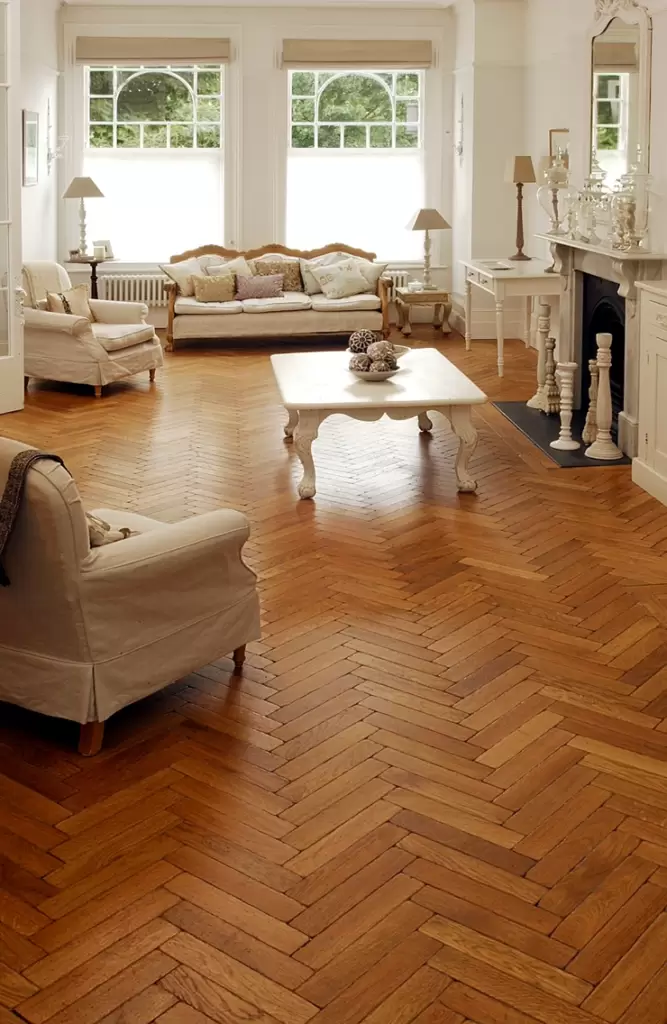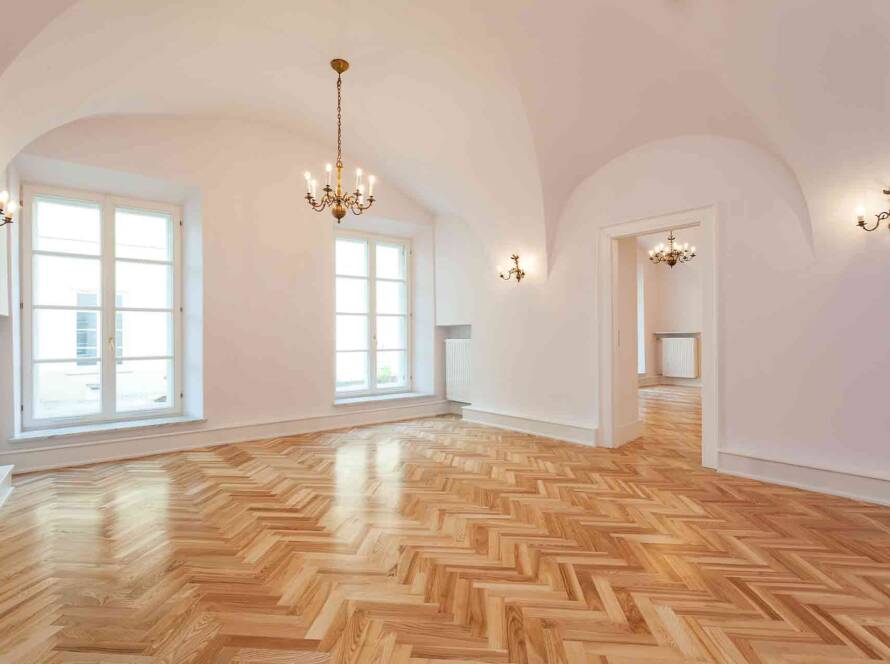Parquet wood flooring is one of the most beautiful and well-recognized wood flooring designs that adds a classic twist to both traditional and modern homes. But, as much as we all love the parquet flooring, it does come with its fair share of problems,parquet damage.
However, as long as you have a professional and experienced flooring installer on hand all of these issues can be easily resolved, so it shouldn’t put you off choosing a parquet floor design if it’s what you desire. Some common signs of damage to parquet floors include:

• Cracking – First,parquet floors can develop cracks over time, especially around edges and joints. Look for fine hairline cracks as well as wider splits. Cracks allow moisture to penetrate deeper into the wood.
• Checking – Then,as wood expands and contracts with changes in humidity, small splits called checks can form in the surface of parquet blocks. Deep or wide checks indicate significant damage.
• Gapping – Also,parquet blocks can become separated at the joints, creating gaps. Gaps allow dirt and grime to build up and penetrate the wood.
• Warping – In addition,excessive moisture exposure can cause parquet blocks to warp, loosening them from adjacent blocks and the subfloor. Bowing, cupping and twisting are types of warping damage.
• Peeling – Also,adhesive failure or water damage can lead to peeling of the veneer on engineered wood parquet. Peeling is a sign the wood or glue has started to delaminate or break down.
• Scratching – Moreover,fine surface scratches can damage the top layer of parquet over time and allow moisture access. Scratches reduce protection and wear out the floor’s finish faster.
• Fading – Furthermore,wood floors will naturally fade over time with exposure to UV light. Uneven or patchy fading can indicate areas that received more intense sun exposure or moisture damage. Fading reduces the visual appeal of the floor.
• Buckling – Then,severe moisture exposure can cause entire parquet blocks or sections to buckle upward in the middle. Buckling damage distorts the shape and profile of the floor.
• Staining – Finally,small spots or larger stains can appear on parquet floors from water damage, mold/mildew growth, pet accidents or other sources. Stains penetrate deep into the wood and are hard to remove once set in.
In conclusion,to determine the best course of action for damage, examine the level of severity and how much the floor’s appearance, structure or integrity has been compromised. Minor issues like a few checks or scratches can often be addressed with spot repairs or re-finishing. More serious water or structural damage will usually require dismantling and replacement of sections or the entire floor. Professional refinishing or restoration may also be options to consider depending on the floor condition.



